I went to Sydney today for Philips’ new product launch. Of most interest to me were the new ranges of LCD TVs which will be rolled out over the next couple of months. There are three ranges — ‘good, better, best’ said the product manager — with the top of the range being the 9000 series. They had a demo set up with five 42-ish inch TVs in a row in order to demonstrate smooth motion. They fed a 1080p24 signal to all five via HDMI and a splitter box. One of the TVs was the new 42PFL9703D ($3,299, available next month) and one was last year’s model. Two were other brand LCD TVs, and one was an other brand plasma. The purpose was to illustrate how good Philips’ motion smoothing technology is.
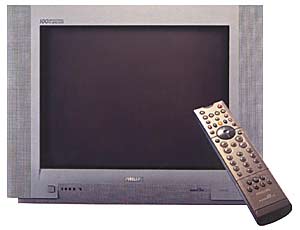 Back around 2000 Philips introduced what it called ‘Digital Natural Motion’. Here’s what I wrote about it in my 2000 review of the Philips 29PT9418 4:3 Flat Screen TV. Note that 29 inch CRT TV then sold for $2,799, so after inflation this new true high definition 42 incher is about the same price.
Back around 2000 Philips introduced what it called ‘Digital Natural Motion’. Here’s what I wrote about it in my 2000 review of the Philips 29PT9418 4:3 Flat Screen TV. Note that 29 inch CRT TV then sold for $2,799, so after inflation this new true high definition 42 incher is about the same price.
… what it is that makes A Bug’s Life so different.
If you have this DVD, I’d suggest you stop reading right now and go to your TV. Choose the full screen side of the DVD and start the movie. Right near the start there is a medium speed ‘camera’ pan up over some mud flats to the island upon which the starring ants reside. You will notice that the cracks in the mud seem to judder down your screen, jumping by discrete intervals with each frame of the movie. Sorry, but after the Philips demo of this, I’ve not been able to avoid seeing this myself, an effect of which I had previously been blissfully unaware being so used to it.
The judder is not due to the PAL picture or TV representation, but to our own sense of perception being sensitive to a range of movement speeds that interfere with the 24 or 25 frames per second of film or PAL TV.
What I would like is for you to be able to watch this scene with the Philips TV under review. This has an option under its ‘Picture’ menu called ‘Natural Motion’. Select this and watch the same scene. The motion is silkily smooth. No judder at all. Quite incredible.
How is this done?
First, some background. A TV makes moving pictures by showing in succession 25 pictures (frames) per second. Each of these is made up of two pictures, interleaved line by line, so 50 separate pictures (called fields) are shown per second. This is your standard TV. An increasing number of high-end TVs are 100 hertz units. To reduce irritating screen flicker, these play each frame twice, so you end up with 100 pictures per second.
Now good old 50 hertz TVs had wonderfully fuzzy screens. Most nice new 100 hertz TVs have wonderfully crisp displays, as does this Philips TV. But the sharp focus means that the judder, previously concealed by screen fuzziness, is revealed. Philips new technology, ‘Digital Natural Motion’, instead of repeating each frame twice as in a standard 100 hertz set, calculates each intermediate frame as a new one, based on the preceding and the following ones.
This makes A Bug’s Life smooth. It works sideways as well, with one of the distant shots of the bikers in Easy Rider equally dropping all the judder (have a look around 19:12 into the movie).
This change is not subtle. But other effects are. First, a negative one. The processing seems to become a little confused when a sharply defined tan or black object moves across a diffuse green background, such as a person moving in front of foilage. This produces a subtle swirl around the edges of the foreground object, as though the air immediately around it is being heated, causing a lensing effect. An example of this is also in Easy Rider (see Dennis Hopper’s coat at 31:17). This appears only very occasionally, and is subtle.
Another subtle effect, but a more significant one in the longer term, has ultimately left me ambivalent about this processing. In short it improves the clarity of the film, making the visual representation ever so smooth. At some points it is breathtaking. In Easy Rider closeup shots of the characters taken in outdoor settings look, well, too clean, as though taken in the studio.
Why should this be? Well, consider the processing. Every second displayed frame is an average of the one before it and the one after it. Each real frame is a copy of the film frame. Each of these has film grain (especially on the 16mm film used for this movie), randomly distributed so the grain is different in each shot. The averaging of the intermediate frames removes the grain, so half the time the picture you’re watching is film-grain free. A welcome side effect is that DVDs telecined from poor quality prints, such as Blade Runner, lose a great many of the scratches and dust marring the film.
So why am I ambivalent? It isn’t the heat-haze effect. It’s the super clarity. Somehow it just seems too good.
 Later I found a scene on a DVD that tended break up under Digital Natural Motion. Most of these circuits no longer break up on that DVD scene. But the similar circuits recently introduced by Sony and Samsung in their TVs (and it’s high-end projector by Sony) still produce the heat haze effect. All still make the picture seem artifically glossy due to that averaging.
Later I found a scene on a DVD that tended break up under Digital Natural Motion. Most of these circuits no longer break up on that DVD scene. But the similar circuits recently introduced by Sony and Samsung in their TVs (and it’s high-end projector by Sony) still produce the heat haze effect. All still make the picture seem artifically glossy due to that averaging.
Meanwhile, Philips has been progressively upgrading its circuit. In its earliest incarnation it worked with 576i signals, and that’s all. It has improved the processing and enhanced its capability to work with higher quality signals.
Philips has named its most recent version of this circuit ‘Perfect Natural Motion’. It is available in the new 9000 series TVs, but not the lesser models. Philips offers this meaningless statement: ‘The Perfect Natural Motion technology offers 500 million pixels of processing power.’ Um, 500 million pixels per second, per year, per millenia? And what does it do to those pixels?
Anyway, it’s results that are important. So, as I said, Philips showed a few 1080p24 clips. Several had fast camera pans which overloaded the processing circuits on all the other TVs, causing picture breakup or masses of judder as the processing fell behind, caught up, fell behind again, and so on. The new Philips one had none of this. None at all. The picture retained its clarity and detail as it panned rapidly down or to the side of the screen. The cost for this was that the picture was noticably delayed compared to the other TVs, perhaps by a frame or two. You should not have this mode switched on when you’re playing video games!
Recently I reviewed the Sony VPL-VW200 home theatre projector, an $18,000 full HD SXRD unit (Sony’s version of LCoS). This was the first projector I had seen which incorporates one of these motion-smoothing circuits. Here’s what I wrote:
You know something? I think this projector may convert me to this processing!
Okay, I’m still uncomfortable with the picture being processed in way that would not happen in the cinema. But the artefacts were rare, and the ‘sheen’ was minimal. The reason for this last is that with a large screen, the fine details are more visible anyway.
With a large display, as produced by a front projector, problems with picture judder are especially irritating, as are most other picture quality problems. I use a segment of the movie ‘The Fugitive’ on Blu-ray to help me assess a display’s ability to cope with 1080p24 signals. If you skip to precisely 50 minutes into this movie, the scene you land on will swiftly segue into an overhead shot of city, straight down towards the ground, with the camera panning over the building tops. If the display does not handle 1080p24 properly, then this will appear jerky as the building tops move from top to bottom of the screen. This projector does not appear jerky, so it handles 1080p24 fine, thank you very much.
Nonetheless, it is hard to see much detail because the picture still judders. You can see it move — kerchunk, kerchunk, kerchunk — from frame to frame because it is so sharply focused.
With this projector, when I switched ‘Motion Enhancer’ to ‘High’ (‘Low’ works with DVD resolution material, but complex material at 1080p resolution seemed to require ‘High’), the buildings were suddenly moving smoothly down the screen. By moving smoothly, the projector made it possible to see, during the few seconds of their passage, all the detail which had previously been obscured by that judder. As my eldest daughter remarked when I demonstrated the effect to her, it was as though the image had been switched to high definition.
In that scene, there was a little distortion on some fine picture detail, presumably because of ambiguity in matching the details between frames to create new frames. Still, this process reveals far more than it conceals.
That was similar to what the ‘Perfect Natural Motion’ processing did on the Philips TV I was watching today.
I should be reviewing one within a few weeks. I cannot be entirely confident of performance until I can use my own test material. But this TV is looking very promising indeed.
Now, all they need to do is work out a way to reinsert film grain and other irregularities to avoid the unnatural glossiness of the processed result.
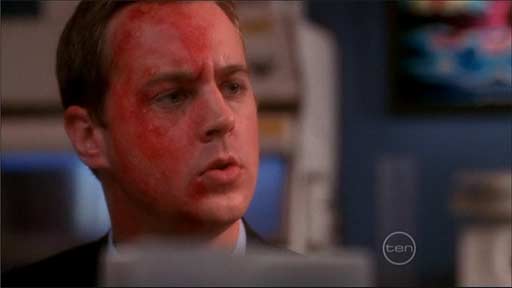
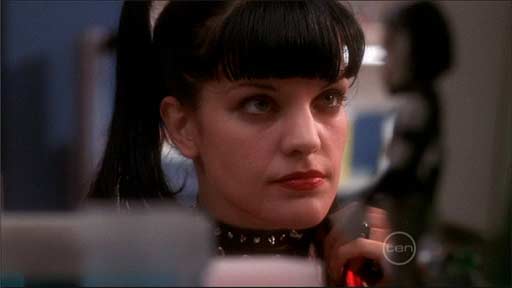

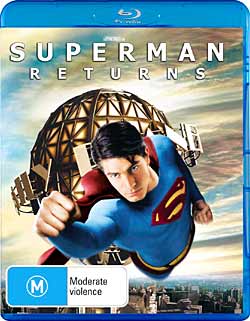 The excellent Blu-ray section of High-Def Digest is a frequent stopping point for me,
The excellent Blu-ray section of High-Def Digest is a frequent stopping point for me, 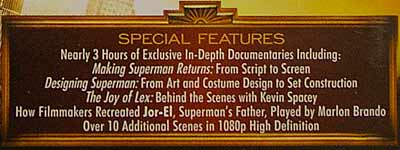 omitted from the Blu-ray. At an average of over 2Mbps, this must use well over two gigabytes all on its own. But here’s the thing. The entire content of the HD DVD version amounts to 27.48GB. While that for the Blu-ray version totals 26.92.
omitted from the Blu-ray. At an average of over 2Mbps, this must use well over two gigabytes all on its own. But here’s the thing. The entire content of the HD DVD version amounts to 27.48GB. While that for the Blu-ray version totals 26.92.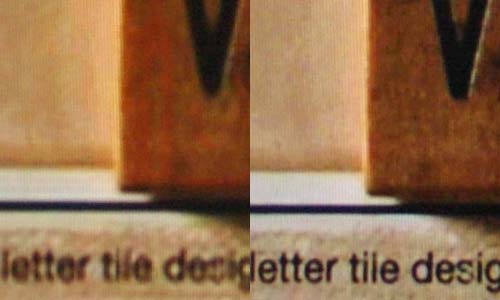 You see, there are a dozen deleted scenes on both versions of this movie amounting to about 16 minutes of run time all together. Both, according to the packaging, are presented in ‘1080p High Definition’ (see photo above from the Blu-ray box). But I noticed that they pretty clearly were not. In fact, they are presented in 480i. Not just in 480i, but in 480i30, so that
You see, there are a dozen deleted scenes on both versions of this movie amounting to about 16 minutes of run time all together. Both, according to the packaging, are presented in ‘1080p High Definition’ (see photo above from the Blu-ray box). But I noticed that they pretty clearly were not. In fact, they are presented in 480i. Not just in 480i, but in 480i30, so that  I don’t have pay TV. This has been a problem at times because I haven’t been able to explore its capabilities very well. But the cost to benefit ratio is, to me, too high.
I don’t have pay TV. This has been a problem at times because I haven’t been able to explore its capabilities very well. But the cost to benefit ratio is, to me, too high. Back around 2000 Philips introduced what it called ‘Digital Natural Motion’. Here’s what I wrote about it in my 2000 review of the Philips 29PT9418 4:3 Flat Screen TV. Note that 29 inch CRT TV then sold for $2,799, so after inflation this new true high definition 42 incher is about the same price.
Back around 2000 Philips introduced what it called ‘Digital Natural Motion’. Here’s what I wrote about it in my 2000 review of the Philips 29PT9418 4:3 Flat Screen TV. Note that 29 inch CRT TV then sold for $2,799, so after inflation this new true high definition 42 incher is about the same price. Later I found a scene on a DVD that tended break up under Digital Natural Motion. Most of these circuits no longer break up on that DVD scene. But the similar circuits recently introduced by Sony and Samsung in their TVs (and it’s high-end projector by Sony) still produce the heat haze effect. All still make the picture seem artifically glossy due to that averaging.
Later I found a scene on a DVD that tended break up under Digital Natural Motion. Most of these circuits no longer break up on that DVD scene. But the similar circuits recently introduced by Sony and Samsung in their TVs (and it’s high-end projector by Sony) still produce the heat haze effect. All still make the picture seem artifically glossy due to that averaging.